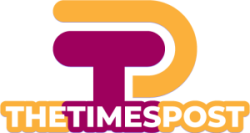Applying for a loan entails submitting a tiny mountain of paperwork, which may include bank and tax documents and pay stubs. These documents assist in addressing a number of the issues that a loan officer will inquire about to determine your eligibility for a loan. However, if your revenue is sporadic or you don’t have some of the traditional evidence of full-time employment, you may be unable to answer all of those queries. If this is the case, you can qualify for no-doc loans or no-income-verification mortgages.
How are no-doc loans structured?
Historically, no-doc mortgages worked on an honour system: the borrower stated their income without presenting a mountain of documentation to support their claim. The lender still checked their credit record but took the borrower’s word for it on their income. Since then, the government has addressed this issue through what is known as the ability-to-repay rule. In brief, a lender must determine if you can genuinely repay a mortgage under these criteria. You cannot normally depend on consumers’ oral statements regarding their income; you must verify the consumer’s income using papers such as payroll statements or W-2s. However, the CFPB allows for some leeway in documenting a borrower’s repayment ability. For instance, a lender may rely on financial institution data highlighting the borrower’s assets to expedite loan processing.
When would you require a no-doc loan?
If you don’t receive regular income but have a substantial amount of money or assets, a no-doc mortgage may be in the cards. However, this product is only applicable to a select few. These are not loans accessible to the average middle- or upper-middle-class borrower. It’s a product aimed at a high-net-worth individual with unusual conditions, such as a businessman who owns and runs a start-up and owns a significant stake in the business.
Is it possible to obtain a no-doc loan today?
While no-doc loans don’t exist in the same manner as they did previous to the Great Recession, they are nevertheless available as part of a larger category of non-qualified mortgages. These items are not generally advertised. Indeed, every major bank contacted for this piece stated that they do not provide this loan form. You’re likely to find them via a portfolio lender, and they may also be referred to as bank statement loans in some instances. If you’re concerned about establishing your income as a self-employed person or someone who works for tips, there are many other ways to qualify for a loan. It will not be a no-doc scenario, though; you will need to provide several documents in order to obtain a loan if you are self-employed.
In the absence of regular paychecks, many self-employed people and businessmen qualify for mortgages by establishing an income stream through tax filings. There is one caveat: those tax returns must give compelling proof – a difficult task if your primary objective is to maximise deductions. The issue is that some company owners operate their enterprises at a loss. If there is a tax loss, there is also a loan qualification loss.
Modern no-doc loans are safer than stated-income loans, as no-doc mortgage lenders are required by federal law to verify your ability to repay the loan through proof of cash flow or assets. Nonetheless, every mortgage has the danger that you will lose your property if you are unable to make the payments.



